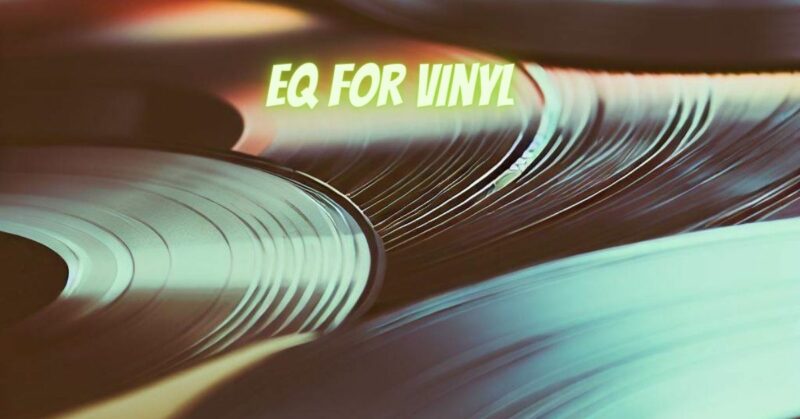Equalization (EQ) plays a pivotal role in shaping the sound of vinyl records. When mastering for vinyl, audio engineers employ EQ to optimize the record’s tonal balance, minimize potential playback issues, and achieve the warm, rich sound that vinyl is celebrated for. In this article, we will explore the intricacies of EQ for vinyl records, shedding light on its importance and the techniques involved.
The Necessity of Vinyl EQ
Mastering audio for vinyl is distinct from preparing music for digital formats, primarily due to the unique characteristics and limitations of vinyl. Understanding the need for vinyl-specific EQ is crucial:
- Physical Constraints: Vinyl records have physical limitations that affect how they reproduce audio. These constraints include groove width, depth, and spacing. Vinyl EQ adjustments compensate for these limitations.
- Frequency Response: Vinyl records exhibit different frequency response characteristics compared to digital formats. EQ adjustments are used to ensure that the music sounds balanced and retains its warmth when played on vinyl.
- Playback Considerations: The way a stylus tracks a vinyl groove can introduce tracking distortion and other issues. Proper EQ can minimize these problems, ensuring a clean and enjoyable listening experience.
Key Considerations in Vinyl EQ
- Low-Frequency Rumble: Vinyl records can be susceptible to low-frequency rumble, which can be introduced during playback. An EQ high-pass filter is often applied during mastering to eliminate or attenuate these rumble frequencies.
- Frequency Tilt: Due to the physical limitations of vinyl, the bass frequencies tend to reduce in level as they approach the center of the record. To compensate for this, engineers apply a gentle low-frequency boost to maintain consistent bass response throughout the record.
- Stereo Imaging: The stereo image on a vinyl record may need adjustments to prevent excessive lateral motion of the stylus, which can result in tracking issues. Engineers often narrow the stereo image slightly to avoid these problems.
- Sibilance Control: To prevent excessive sibilance or “s” sounds, which can cause distortion, engineers may apply de-essing EQ to reduce the level of problematic high-frequency content.
- Dynamic Range Control: Vinyl records have limited dynamic range compared to digital formats. Engineers may apply dynamic range compression or limiting to ensure that the grooves can accommodate the audio without issues.
- Frequency Response Compensation: The RIAA (Recording Industry Association of America) equalization curve is used during vinyl mastering to ensure a flat frequency response during playback. This curve includes specific EQ adjustments that are applied both during cutting and playback.
Mastering for vinyl is a delicate and precise art that requires a deep understanding of the medium’s unique characteristics and limitations. EQ for vinyl records is an essential component of this process, allowing engineers to fine-tune the audio to ensure that it sounds its best when played on a turntable.
By carefully addressing issues such as frequency balance, stereo imaging, and dynamic range, audio professionals can create vinyl records that capture the warmth and authenticity that vinyl enthusiasts cherish. The art of vinyl EQ is a testament to the commitment to preserving and enhancing the unique experience that vinyl records offer to music lovers around the world.


